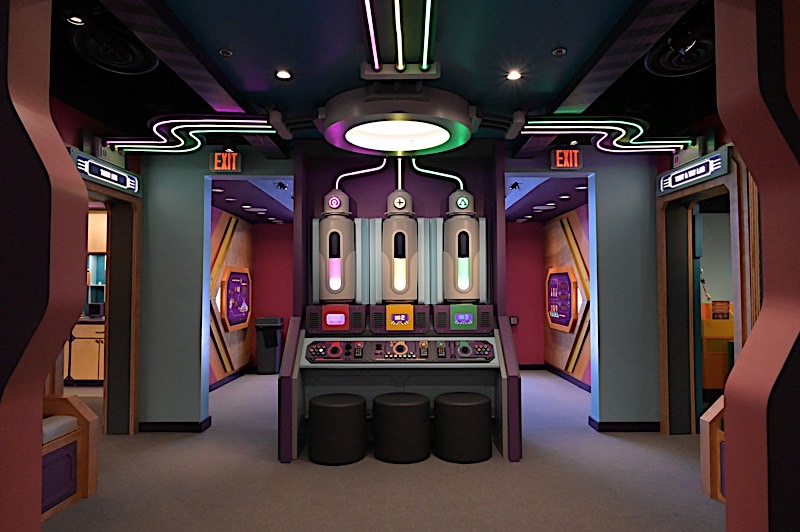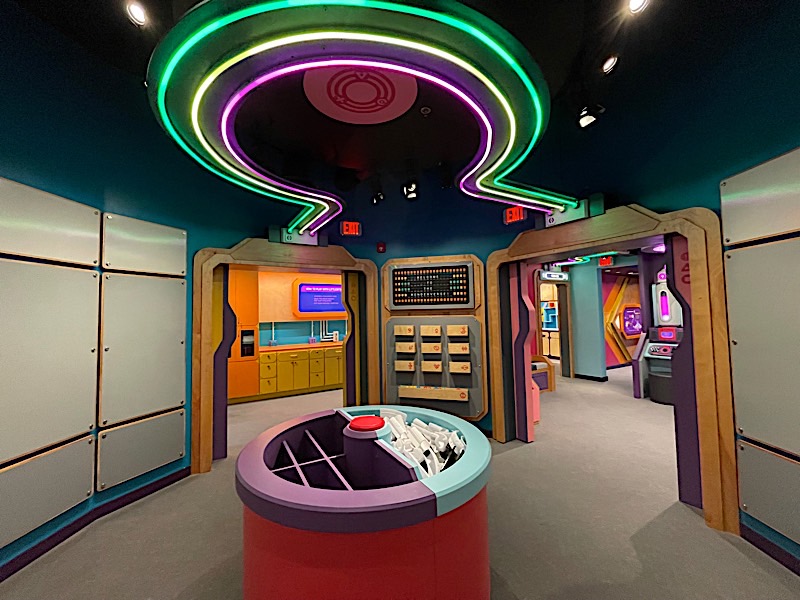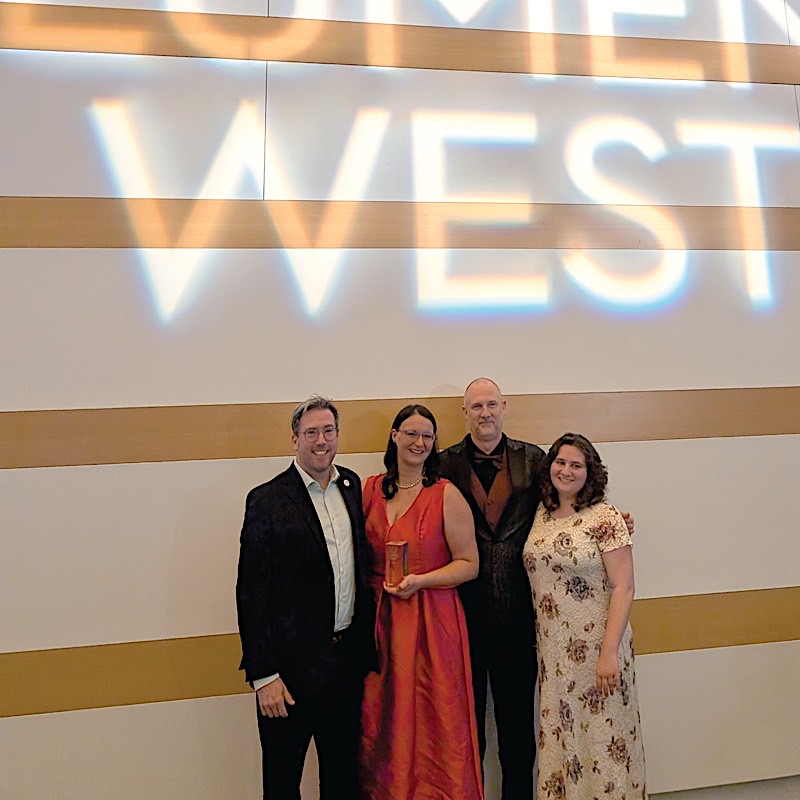


Visual Terrain Senior Lighting Designer Christina J. Martin and Associate Principal of Production Steeve Vajk were recognized with an IES Illumination Award of Merit for Mayor Clayton’s Wonder Lab at Give Kids the World Village in Kissimmee, Florida. The award was presented at the Lumen West Awards in Los Angeles on August 1, 2025. Visual Terrain Principal-in-Charge Lisa Passamonte Green was also named on the award.
Christina describes the project as follows:
The Interactive STEAM Lab is an immersive space designed to engage children in Science, Technology, Engineering, Art, and Mathematics (STEAM) concepts. The lighting design for this renovation integrates math and art themes in a visually compelling and functional way, creating an immersive experience that supports educational activities and creative storytelling.
The primary goal of the lighting design is to provide ample task lighting to facilitate learning and hands-on activities. This includes well-lit areas for science experiments, art projects, and technology demonstrations, ensuring visibility and comfort throughout the space. In addition to practical lighting, the design also enhances the overall experience by integrating creative lighting elements that support the venue’s narrative. The lighting is choreographed to align with the themes of Wonder, Imagination, and Possibility, as represented by the Wonderbots—animated characters that inspire children to engage with the exhibits.
The lighting design uses color, movement, and intensity to illustrate key STEAM principles, blending the precision of math with the expressiveness of art. This is achieved through innovative use of lighting, such as programmable LED neon fixtures creating dynamic effects mimicking energy flow. These neon installations are strategically placed to highlight various areas of the space, creating a sense of wonder as visitors explore each room.
Given the nonprofit status and budget constraints, the design team focused on cost-effective, sustainable solutions. Existing fixtures were retrofitted with LED lamps, and the original control system was adapted with a new DMX system to manage the RGBW Pixel Neon lights. Partnerships with manufacturers helped secure donated or discounted fixtures, reducing costs without sacrificing quality.
The lighting design strikes a balance between function and creativity, supporting the educational goals of the STEAM Lab while creating a visually stimulating environment. By blending technology and creativity, the design invites visitors to explore STEAM in an engaging, hands-on way.
For more photos and info about Mayor Clayton’s Wonder Lab, visit our portfolio gallery.

